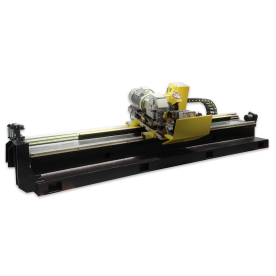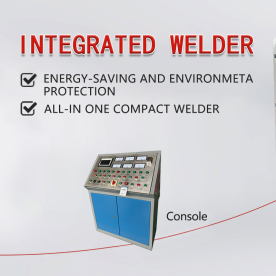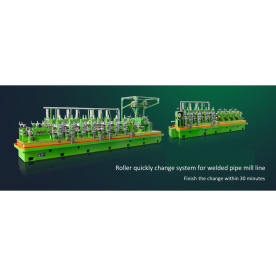[Annealing machine]Understanding the Importance of the Annealing Machine in Modern Manufacturing Processes: A Comprehensive Guide
News 2024-12-21
The manufacturing industry has continually evolved over the years, incorporating advanced technologies and techniques to enhance efficiency and product quality. Among these technologies, the annealing machine plays a crucial role in metalworking and various other applications. This article delves into the significance of annealing machines, their working principles, and the types commonly used in the industry, along with their applications, benefits, and considerations for implementing these machines in production.
What is an Annealing Machine?
An annealing machine is a specialized piece of equipment designed to heat materials, primarily metals and glass, to a specific temperature and then cool them down at a controlled rate. This heating and cooling process, known as annealing, helps remove internal stresses in materials, refine their microstructure, and improve their overall mechanical properties. The essential purpose of an annealing machine is to enhance the workability and durability of metals, making them easier to shape and process in later stages.
The Annealing Process
The annealing process involves three main stages: heating, soaking, and cooling.

Understanding the Importance of the Annealing Machine in Modern Manufacturing Processes: A Comprehensive Guide
2. **Soaking**: Once the material reaches the target temperature, it is maintained at this temperature for a specific duration. This is known as the soaking period, and it allows the atomic structure of the metal to reorganize, alleviating internal stresses and promoting recrystallization.
3. **Cooling**: After the soaking period, the material is cooled down, often at a controlled rate. Cooling can occur in various environments, such as air, oil, or water, depending on the material type and the desired properties.
Types of Annealing Machines
There are several types of annealing machines, each designed for specific materials and applications:
1. **Batch Annealing Furnaces**: These furnaces are used to process batches of materials simultaneously. They are ideal for operations where flexibility and versatility are required, allowing various materials to be annealed in one cycle.
2. **Continuous Annealing Lines**: Typically employed in high-volume production settings, continuous annealing lines offer a streamlined process where materials pass through a heating chamber and cooling zone without interruption. This method enhances efficiency and minimizes handling.
3. **Vacuum Annealing Furnaces**: These specialized furnaces eliminate atmospheric gases during the annealing process, which is critical for metals sensitive to oxidation or contamination. Vacuum annealing results in high-purity materials with improved mechanical properties.
4. **Bright Annealing Machines**: Used mainly for stainless steel and other materials requiring a bright, polished appearance, bright annealing machines utilize controlled atmospheres to achieve oxidation-free surfaces.
Applications of Annealing Machines
Annealing machines find extensive applications across various industries, including:
- **Metallurgy**: In the metals industry, annealing improves the ductility and toughness of materials, making them suitable for forging, fabrication, and machining.

Understanding the Importance of the Annealing Machine in Modern Manufacturing Processes: A Comprehensive Guide
- **Automotive Industry**: Components such as springs, gears, and axles undergo annealing to enhance strength and reliability, essential for automotive performance and safety.
- **Electronics**: Annealing helps improve the conductivity and structural integrity of electronic components, playing a vital role in the performance of devices.
Benefits of Using Annealing Machines
The advantages of employing annealing machines in manufacturing processes include:
1. **Improved Material Properties**: Annealing enhances ductility, toughness, and machinability, leading to improved final product characteristics.
2. **Reduced Internal Stresses**: Relief of internal stresses minimizes the risk of warping or cracking during subsequent processing, resulting in higher-quality outputs.
3. **Enhanced Workability**: Annealed materials are easier to shape and fabricate, facilitating various manufacturing techniques.
4. **Consistency and Quality Control**: Automated annealing machines provide consistent heating and cooling profiles, ensuring uniformity and high quality across batches.
Conclusion

